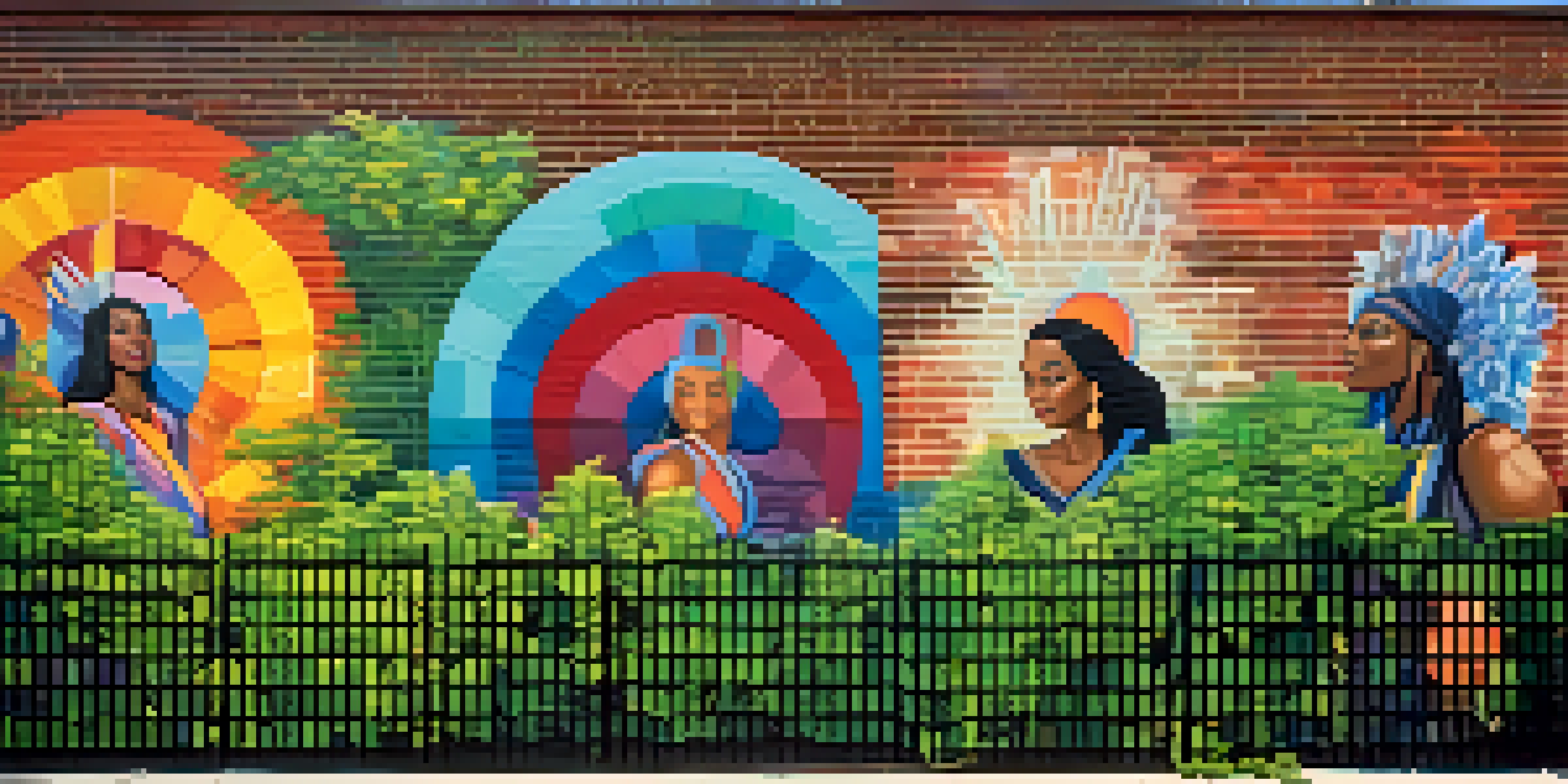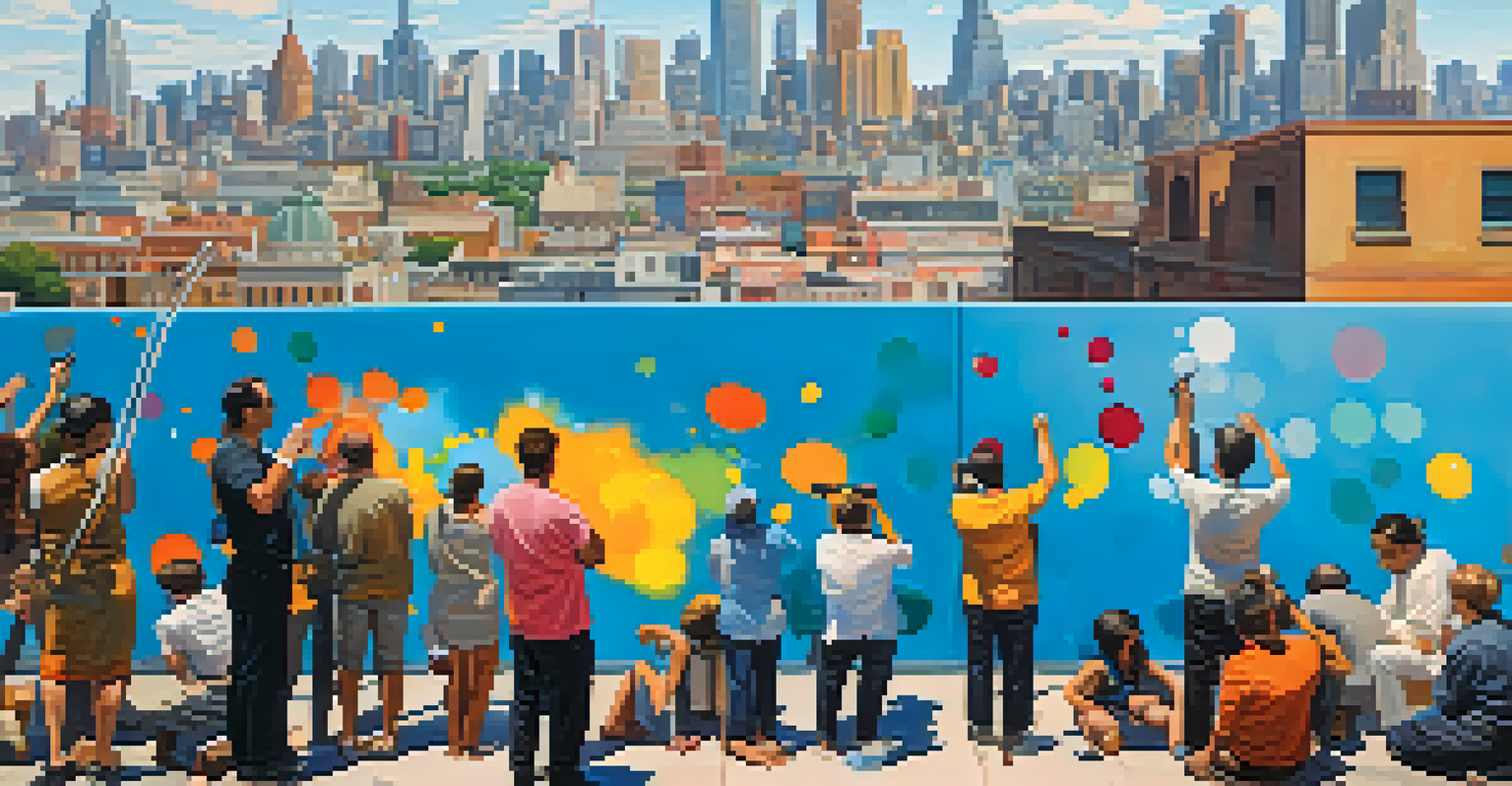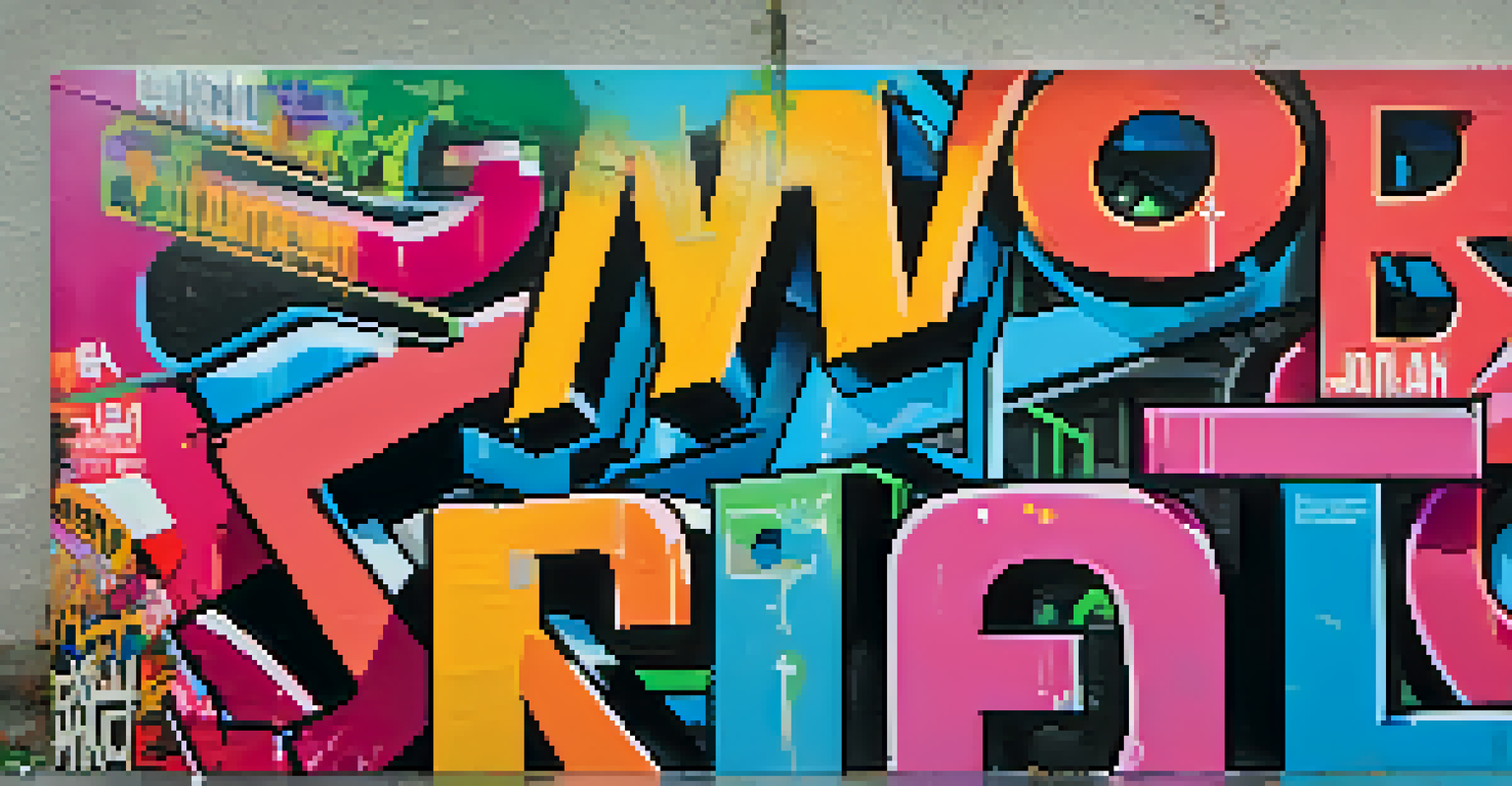Street Art and Community: How Chicago Artists Unite Us

The Vibrant Canvas of Chicago: A Brief Overview
Chicago is a city rich in culture and history, and its streets serve as a vibrant canvas for artists. From the iconic murals in Pilsen to the massive pieces in Wicker Park, street art reflects the city's diverse identity. This art form is more than just decoration; it tells stories, expresses emotions, and highlights social issues.
Art is not what you see, but what you make others see.
As you walk through neighborhoods, you'll notice how street art breathes life into the urban landscape. It's a visual dialogue between the artists and the community, fostering a sense of belonging. Each piece contributes to the city's narrative, making it a living gallery that evolves with its people.
In this way, street art becomes a powerful medium for connection, inviting both locals and visitors to engage with the city's spirit. It’s not just about the art itself; it’s about the conversations it sparks and the unity it fosters among diverse groups.
Artists as Community Builders: The Role of Collaboration
In Chicago, many street artists see themselves as more than just creators; they are community builders. Collaborations among artists often lead to stunning murals that represent the unique character of neighborhoods. These partnerships encourage dialogue, bringing together different perspectives and experiences.

For instance, initiatives like the Chicago Urban Art Society promote collective projects that engage local residents. Such collaborations not only beautify spaces but also empower communities by involving them in the creative process. When artists work alongside locals, it cultivates a deeper sense of ownership and pride in their environment.
Street Art as Community Connection
Chicago's street art fosters a sense of belonging and dialogue among residents, creating a living gallery that evolves with the community.
Through these collaborative efforts, street art becomes a shared endeavor, reinforcing community bonds. By uniting artists and residents, these projects create a lasting impact that transcends the artwork itself, fostering a stronger social fabric.
Cultural Expression: Reflecting Voices and Stories
Street art in Chicago serves as a powerful vehicle for cultural expression, allowing marginalized voices to be heard. Artists often draw inspiration from their backgrounds, experiences, and the societal issues they face. This creates a rich tapestry of narratives that reflect the community’s diversity.
The role of the artist is to make the world a better place by revealing the beauty that already exists.
For example, murals in neighborhoods with significant immigrant populations tell stories of resilience and hope. These pieces not only celebrate cultural heritage but also educate the wider community about different histories and experiences. Street art thus becomes a bridge, fostering understanding among people from various walks of life.
As these stories unfold on walls, they resonate with both locals and visitors, sparking curiosity and conversation. This cultural expression through art not only enhances the visual landscape but also deepens community ties.
Social Change: Art as a Catalyst for Activism
Many Chicago street artists use their work as a platform for social change, tackling pressing issues such as racial justice, mental health, and environmental awareness. These artworks often serve as poignant reminders of the challenges faced by the community. They inspire viewers to reflect on social realities and engage in activism.
Take, for example, the powerful murals addressing police brutality and systemic racism. These pieces not only convey urgent messages but also encourage dialogue and action among community members. Street art has the potential to mobilize individuals, sparking movements that seek to address injustices.
Art for Social Change and Activism
Many street artists in Chicago use their work to address social issues, inspiring community engagement and activism through powerful visual messages.
By capturing the essence of social issues, street art becomes a rallying cry for change. It empowers communities to voice their concerns, making art a vital tool for activism and a catalyst for progress.
Revitalizing Spaces: The Impact of Street Art on Neighborhoods
Street art plays a significant role in revitalizing urban spaces, transforming neglected areas into vibrant hubs of creativity. When artists beautify a space, it attracts attention and encourages community engagement. This revitalization often leads to increased foot traffic and economic development.
For instance, neighborhoods that embrace street art tend to see a boost in local businesses and tourism. Cafes and shops often emerge around popular murals, creating a lively atmosphere. This economic uplift benefits not just the artists but the entire community, fostering a sense of pride and identity.
Moreover, these transformed spaces become gathering points for residents, strengthening community bonds. By turning dull walls into colorful masterpieces, street art breathes new life into neighborhoods, making them more inviting and connected.
Education and Workshops: Empowering Through Art
Many Chicago artists are dedicated to sharing their skills through educational initiatives and workshops. They recognize the importance of empowering the next generation of creators, fostering a love for art and self-expression. These programs often provide valuable resources to youth and underserved communities.
Through hands-on workshops, participants learn not only artistic techniques but also the significance of storytelling through art. This process cultivates a sense of confidence and belonging, encouraging individuals to express their unique perspectives. It also connects participants to their communities, reinforcing the idea that everyone has a voice.
Revitalizing Neighborhoods Through Art
Street art transforms neglected urban spaces into vibrant hubs, boosting local economies and community pride.
By investing in education and mentorship, artists are shaping a future where creativity thrives. These initiatives create a ripple effect, inspiring young artists to contribute their own stories to the rich tapestry of Chicago's street art.
Looking Ahead: The Future of Chicago's Street Art Scene
As Chicago's street art scene continues to evolve, it remains a dynamic expression of community and culture. The city's artists are constantly pushing boundaries, experimenting with new mediums and themes. This evolution reflects the changing landscape of the city itself and the voices within it.
Looking ahead, the future of street art in Chicago will likely involve even greater collaboration among artists, residents, and local organizations. As communities become more engaged, we can expect to see art that not only beautifies but also addresses pressing social issues. This collaborative spirit will further enhance the role of street art in fostering unity.

Ultimately, Chicago's street art will continue to inspire, challenge, and connect us all. As long as there are stories to tell and voices to amplify, the vibrant canvas of Chicago will thrive, celebrating the power of art to unite communities.